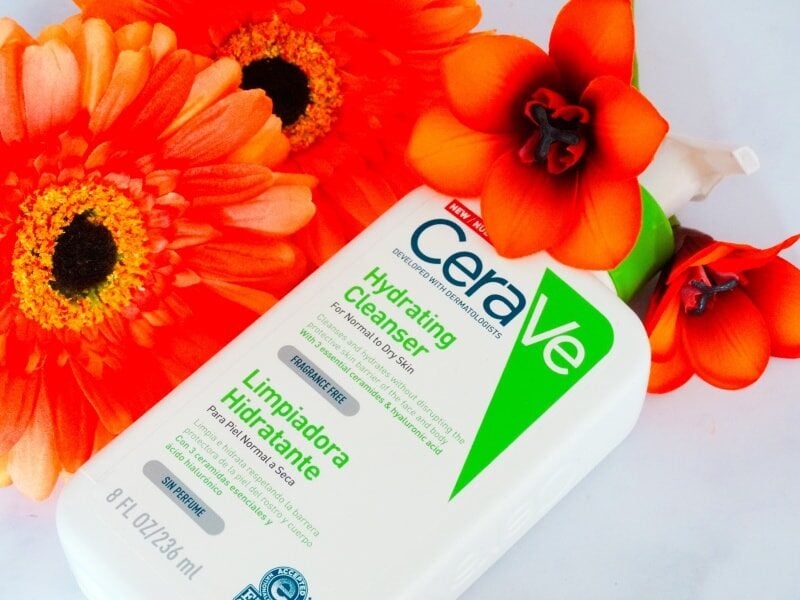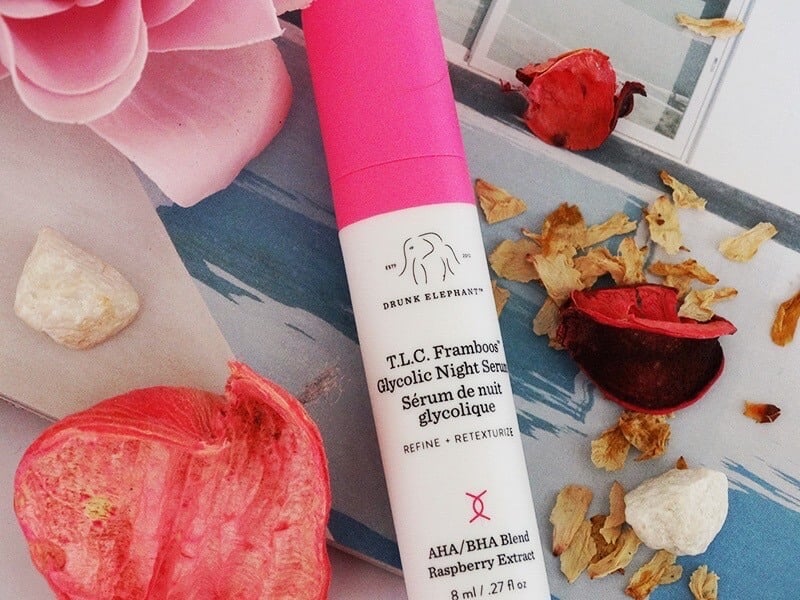
How do you get rid of whiteheads? They’re not the worst form of acne to deal with. They’re not as inflamed as angry red pimples or as obvious as dark blackheads, but that doesn’t mean you want them on your skin.
Good news: whiteheads are easy to treat (and without any popping too!). You just need to know what works. A lot of products out there make big promises they can’t keep, but there’s one active that can do the job and get rid of whiteheads on your nose, chin, or wherever they appear – quickly and effortlessly.
Here’s how to prevent and remove whiteheads on your nose and chin and everywhere else on your face once and for all – according to science, not hype:
- What Are Whiteheads?
- What Causes Whiteheads?
- Whiteheads vs. Milia: What’s The Difference?
- Whiteheads VS Blackheads: What’s The Difference?
- Whiteheads VS Purging: What’s The Difference?
- How Do You Know If A Skincare Product Is The Cause Of Your Whiteheads?
- How To Get Rid Of Whiteheads
- How Long Does It Take For Whiteheads To Go Away?
- The Bottom Line
What Are Whiteheads?
Whiteheads are one of the most common forms of acne. Also known as closed comedones, they’re raised, have a white tip, and occur either on their own or in clusters. They often become inflamed, too. They can occur anywhere on your skin, but are more common on your nose and chin, where you have more oil glands than in other areas of your skin.
Related: Blackheads VS Whiteheads VS Pimples: What’s The Difference?
What Causes Whiteheads?
Like all types of acne, whiteheads begin to form when your skin produces too much sebum. Blame it on fluctuating hormones (ah, the joys of being a woman!), pollutants, a diet rich in process foods, and certain types of medication.
Excess sebum gets stuck in your pores, together with dead skin cells and any comedogenic ingredients found in your skincare products, and bacteria. They all form of gooey moisture that, little by little, clogs and enlarges your pores.
If the opening of your pore stays open, the gooey mixture trapped inside oxidises through the opening and becomes black. You’ve got a blackhead. If there’s no opening, but a thin layer of skin covers the bump the clog has caused, you’ve got a whitehead.
Related: Everything You Need To Know About Sebum (Why It’s NOT Your Skin’s Enemy)
Struggling to put together a skincare routine that banishes excess oil, acne, and whiteheads? Download your FREE “Best Skincare Routine For Oily Skin” cheat sheet below to get started (it features product recommendations + right application order):
Whiteheads vs. Milia: What’s The Difference?
Whiteheads look a lot like milia seeds. They’re both little raised white bumps on the surface of your skin.
But, there are three key differences:
- Cause: Milia seeds occur when keratin gets trapped in the follicle, forming a small, non-inflamed cyst under the top layer of your skin. Whiteheads are caused by excess sebum trapped into pores.
- Location: Whiteheads can pop up everywhere. Milia seeds usually occur around the eye area.
- Lifespan: Whiteheads disappear within a 4 weeks. Milia seeds hang around for weeks or even months!
Related: How To Prevent And Treat Milia Seeds

Whiteheads VS Blackheads: What’s The Difference?
Whiteheads and blackheads are both two types of non-inflammatory acne. They’re similar and form in the same way, but with a key difference. Both whiteheads and blackheads occur when your pores are congested with dead cells, excess oil, dirt, and other impurities, like comedogenic skincare products.
Blackheads are also called open comedones, because the opening of the pore is… well, open. This allows the mixture inside to get into contact with air. Oxigen oxidises it, which is a fancy way of saying, it makes the mixture turn black. Hello, blackheads!
Whiteheads are called closed comedones because the opening of the pore is closed. At all times, there’s a layer of skin covering the clog underneath. The mixture never gets into contact with oxygen, so it stays its natural colour. You just get a flesh-coloured bump.
Whiteheads VS Purging: What’s The Difference?
Purging looks a lot like a breakout – and breakouts can feature plenty of whiteheads. How can you tell when you’re dealing with a purge and when you’re breaking out with whiteheads? Here are the key differences:
Whiteheads and breakouts happen when your skin is congested. Excess oil, comedogenic ingredients, and dead cells get trapped in your pores, leading to pimples, whiteheads, and blackheads. This is a process that lasts a few weeks. Acne forms in the deeper layers of your skin before it emerges to the surface.
Purging happens when you exfoliate skin. As the top layers of your skin shed, you expose the gunk that was hiding underneath. In other words, by exfoliating skin, you expose the breakouts that was forming underneath and that would have come to the surface sooner or later. You’re just speeding up the process – and that’s a GOOD thing.
Breakouts last until the cause lasts. If they’re caused by comedogenic skincare products, get rid of them, and your skin will go back to normal. If the cause if an excessive production of sebum, then it’ll take longer for that to heal. The key here is to exfoliate your skin consistently to keep your pores clean and remove the gunk that may fall into them before it has the chance to accumulate and cause whiteheads, blackheads, and pimples.
Purging lasts for 4 to 6 weeks, depending on how congested your skin was in the first place. In the short term, you’ll experience more whiteheads and acne. That’s because everything is coming to the surface at once, so you can get rid of it all and finally enjoy clear skin once the purging period is over. Phew!
How Do You Know If A Skincare Product Is The Cause Of Your Whiteheads?
How do you know when a whitehead is caused by a skincare product that’s making you breakout? There are a couple of tell-tale signs. If you’ve just started using a new cream or moisturiser and, within the first week, you suddenly get a small cluster of whiteheads, there’s a high chance the product is making you breakout. Another clue is when the whiteheads appear on an area of skin where they normally don’t. If that’s the case, ditch the product immediately. It doesn’t agree with your skin.
How To Get Rid Of Whiteheads
1. Cleanse Your Skin To Prevent Clogged Pores
Whiteheads happen when your pores get clogged. You can’t always prevent an overproduction of sebum, but you can remove makeup, pollutants, and all the crap that deposits on your skin during the day before they comfortable settle into your pores, too.
To find the best type of cleanser for your skin type, check out this quick guide. Make sure that your cleanser is powerful enough to remove every trace of dirt and grime, yet gentle enough not to irritate and dry out skin.
If after cleansing your skin feels tight or you find traces of makeup on a cotton pad, change your cleanser. It’s not doing its job right.
Best Picks:
- CeraVe Hydrating Facial Cleanser ($14.99): A gentle cleanser for dry skin that removes makeup and moisturises skin at the same time. Available at Sephora, Ulta and Walmart
- Clinique Take The Day Off Cleansing Balm ($29.00/£24.00): A non-comedogenic cleansing balm that removes all traces of dirt and makeup without leaving a greasy residue behind. Available at Sephora, Nordstrom, Sephora and Ulta
- Corsx low PH Good Morning Gel Cleanser ($11.00): A gentle pH-balanced (5.5) foaming cleanser that gets rid of excess oil and impurities without drying out skin. Available at Sokoglam and YesStyle.
Related: How To Choose The Best Cleanser For Your Skin Type

2. Exfoliate Skin To Unclog Pores
Whiteheads are a job for salicylic acid (BHA). Unlike other exfoliants (think scrubs and glycolic acid), salicylic acid is oil-soluble. What does this mean?!
While other exfoliants only exfoliate the surface of your skin, salicylic acid also gets deep inside your pores (right where the whiteheads is!), removing all the gunk that’s giving you acne.
If your skin is acne-prone, I recommend you use salicylic acid every other night (right after cleansing) to make sure your pores are always kept clean and free of gunk.
Other skin types, keep salicylic acid at hand for when a cluster of blackheads pops up on your skin. You can use it all over your face (if you’re not using any other exfoliant) or on the affected area only.
Best Picks:
- Drunk Elephant T.L.C. Framboos Glycolic Night Serum ($90.00): This exfoliant contains Salicylic Acid to remove blackheads on your nose and Glycolic Acid to brighten the complexion. Available at Cult Beauty, Sephora and SpaceNK
- Paula’s Choice Skin Perfecting 2% BHA Liquid ($29.00): The texture’s a little sticky, but if you can tolerate that, it’s one of the best treatments for whiteheads (and all other types of acne). Available at Dermstore, Look Fantastic and Paula’s Choice
- The Inkey List Beta Hydroxy Acid (£9.99): A simple, no-frills Salicylic Acid exfoliant for those on a budget. Available at Cult Beauty and Sephora
Related: Why Salicylic Acid Is Key To Spot-Free Skin

3. Spot Treat Stubborn Whiteheads With Azelaic Acid
For most people, regular exfoliation is more than enough to prevent and get rid of blackheads.
But, if you’re dealing with a lot of acne or your whiteheads are super stubborn, add Azelaic Acid to your routine.
This naturally occurring acid works by speeding up cellular turnover (i.e. the skin’s natural exfoliating process). It’s particularly useful to treat acne in sensitive skin and get rid of all kinds of bumps, whiteheads included.
The only con? Its thick, highly unpleasant texture. If you can put up with it, you’ll see results.
Best Picks:
- Facetheory Lumizela Azeclear Azelaic Acid Serum A15 (£24.99): It features a whopping 15% azelaic acid to treat congested skin and brighten dark spots. Available at Facetheory
- Paula’s Choice 10% Azelaic Acid Booster ($36.00): This azelaic acid booster also features pore-exfoliating salicylic acid to remove whiteheads from nose and chin faster. Available at Dermstore and Paula’s Choice
- The Ordinary Azelaic Acid Suspension 10% (£5.50): It has an unpleasant texture, but it gets the job done. It helps fade away dark spots, remove whiteheads, and treat acne. Available at Beauty Bay, Cult Beauty and Sephora
Related: Is Azelaic Acid The Best Treatment For Acne, Rosacea, And Dark Spots?
How Long Does It Take For Whiteheads To Go Away?
Skincare doesn’t work overnight. It usually takes around 4 weeks, especially if you have lots of acne/whiteheads for whiteheads to disappear. Keep at it. The more consistent you are, the sooner you’ll see results.
The Bottom Line
Whiteheads are just another form of acne. The easiest and fastest way to prevent and treat them is to cleanse your skin well and exfoliate with salicylic acid. If that alone doesn’t work, add Azelaic Acid to the mix.

